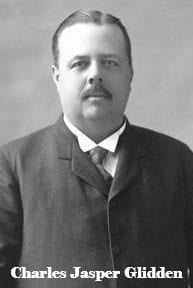
Charles Jasper Glidden retired from a telegraph and telephone company at age forty-three. He had worked since age 16 and was a very wealthy man. Soon after retirement, he and his wife Emma sailed for Europe. He bought a car in 1901; it was a sixteen horse-power Napier that was English-made. The couple traveled the continent as a party of three – he, his wife, and a mechanic.
In the years that followed, Mr. and Mrs. Glidden traveled more than 46,000 miles in 39 countries. In only 1904 they covered nearly four-thousand miles in an attempt to lead the first group to travel by car to the St. Louis World’s Fair. Along the way, lecture-stops were scheduled to promote fair laws to protect automobile travelers, to encourage local authorities to create better roads, and promote safety as a first consideration.
As may be expected, the Gliddens have covered more miles in the United States than any other country, at just under 8,000 miles, but they have motored over 5,000 miles in France, more than 4,300 in India, and nearly 4,000 in England. The Minneapolis Sunday Tribune of June 25, 1909, estimated that the Gliddens spent more than $100,000 on their travels.
Generally, Glidden advocated safe travel in all methods of transportation, including automobiles, balloons, and later airplanes. Wherever he went after the fair in Saint Louis, his appearances and lectures emphasized safe and reasonable travel practices such as common sense over risk and endurance over speed.
Some have said, “What Thomas Wilson did for sports, Glidden did for motoring.” After their initial trip to Europe and their return to America, Glidden organized and sponsored the Glidden Tours. The first was held in 1905 when triple-A (The American Automobile Association) sponsored 33 competitors as they set out on July 11th for a twelve-day, 867-mile tour of New England.
It was a given that accidents would happen, but only one occurred. It involved a White Steamer owned by Mrs. J. N. Cuneo. Very little damage occurred, and the car returned to the tour for which she was “heartily congratulated for her pluck.”
The 1905 event was dubbed by the newspapers as “Glidden’s Reliability Rally,” quite an appropriate name. It was so successful that it became an annual event until 1913, when it was necessary to discontinue the tours due to the range of challenges and the number of participants.
***
Two sets of color postcards of the Glidden Tours are known: the Flanders “20” Set, and the E.M.F. “30” set. The older of the two sets dates from the 1909 Detroit, Michigan to Denver, Colorado and return to Kansas City, Missouri. An estimate by an experienced collector hints that the set has 20 issues, illustrating the start of the event and continuing along roadsides in Michigan, Wisconsin, Minnesota, Colorado, Kansas, and Missouri.
The second set was made two years later when the Glidden Tour started in New York City and traveled the east coast southward to Jacksonville, Florida. No guesses have been made to the number of cards in the set.
Neither set shows any evidence of the photographer, caption writer, or manufacturer, although both sets appear to have many identical characteristics.
There is a third set of monochrome photos published by the Peerless Motor Car Company. These are a low-quality set (very thin card stock) with carelessly printed images.
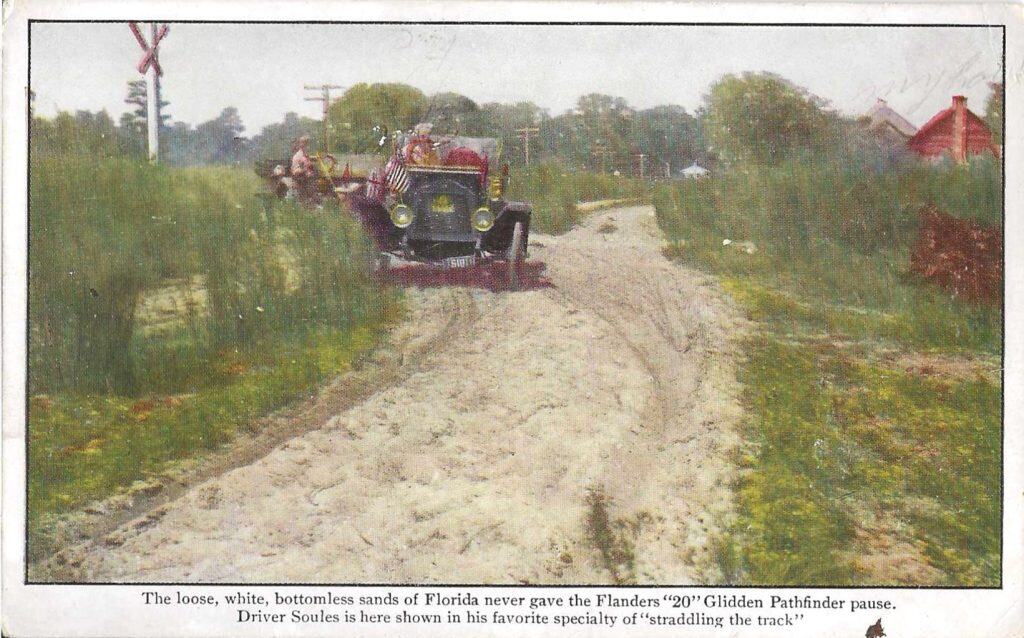
A Flanders “20” has a reputation as a fine touring car. It has no shock absorbers, but its light weight contributes to and allows the use of softer springs for a reasonable ride. Third gear has a nice ratio of 8.75 to 1 overdrive, and the car performs well on long-distance runs, as it did in the 1911 Glidden Tour as the pathfinder tour car and later as a participant, when it ran from New York City to Jacksonville, Florida.
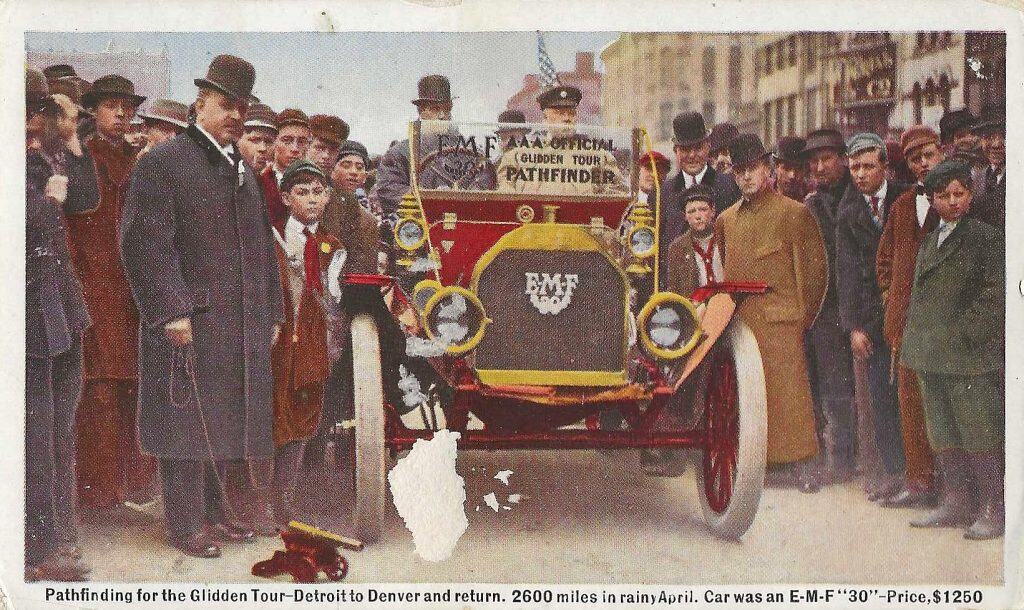
The E-M-F Model 30 was introduced in 1908. The 30 was a forward-thinking car with a three-speed transaxle, however the early models with thermosyphon cooling were prone to overheating. Soon after the problem was identified, the model 30 was recalled and fitted with water pumps. The E-M-F 30 became a Studebaker, after the Everitt-Metzger-Flanders Company was taken over by a South Bend, Indiana, wagonmaker.
Other cards in the series show the EMF-30 in a variety of situations. One shows a sunny roadside meeting with fellow participants, another on a muddy, hilly, tractionless path through the woods. Few specific locations are mentioned in the captions, but each card carries a message as to how well the car performed under the dreadful circumstances created by the April rains. And naturally, if these were advertising postcards, the price of $1,250 for the model 30 at your friendly neighborhood dealer was always somewhere on every card.
***
OTHER GLIDDEN TOURS BY YEAR
1906 Buffalo, NY to Boston through Montreal and Quebec
1907 Cleveland, Ohio to New York City
1908 Buffalo, NY to Albany through Pittsburgh and Philadelphia
1909 Detroit, Michigan to Kansas City, Missouri through Denver, Colorado
1910 Cincinnati, Ohio to Chicago, Illinois, through Oklahoma and Kansas
1911 New York City to Jacksonville, Florida
1912 Detroit, Michigan “Lakes to the Gulf Tour,” to New Orleans
1913 Minneapolis, Minnesota to Glacier National Park, Montana
***
The online encyclopedia, Wikipedia, states that the Glidden Tours were revived in 1946 by the Veteran Motor Car Club of America and have continued since, but the new tours feature only antique cars that travel announced routes and stop solely to show off their vehicles. Many of the riders and drivers do so in period costume.
The sponsors are proud to claim that the Glidden Tours are the best attended auto-event that does not emphasize speed. Literally thousands of “curb-visitors” appear every year.
The next Glidden Tour (the 77th) will be October 22 – 27, 2023, in Thomasville, Georgia.
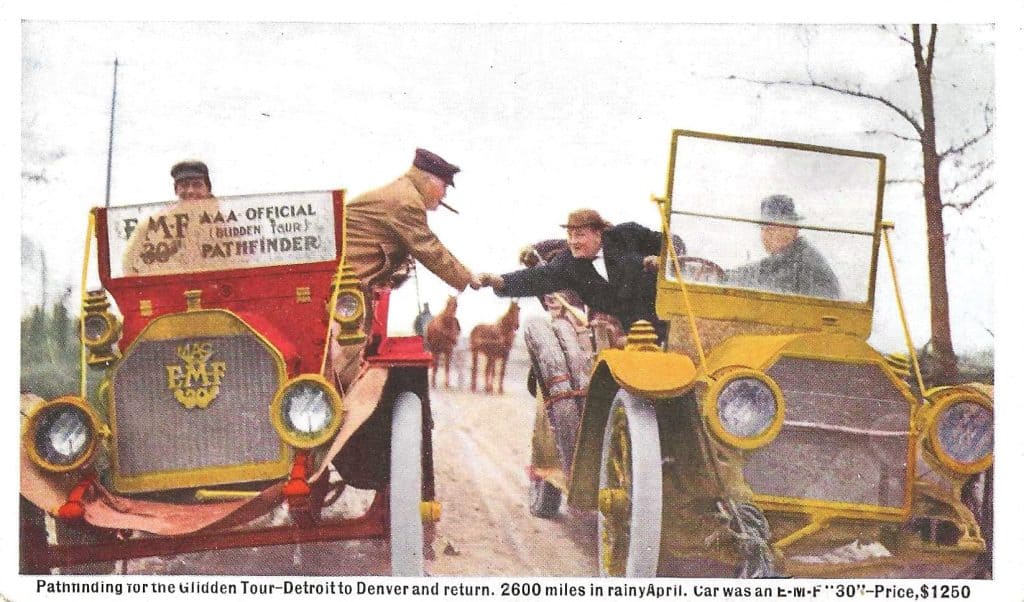

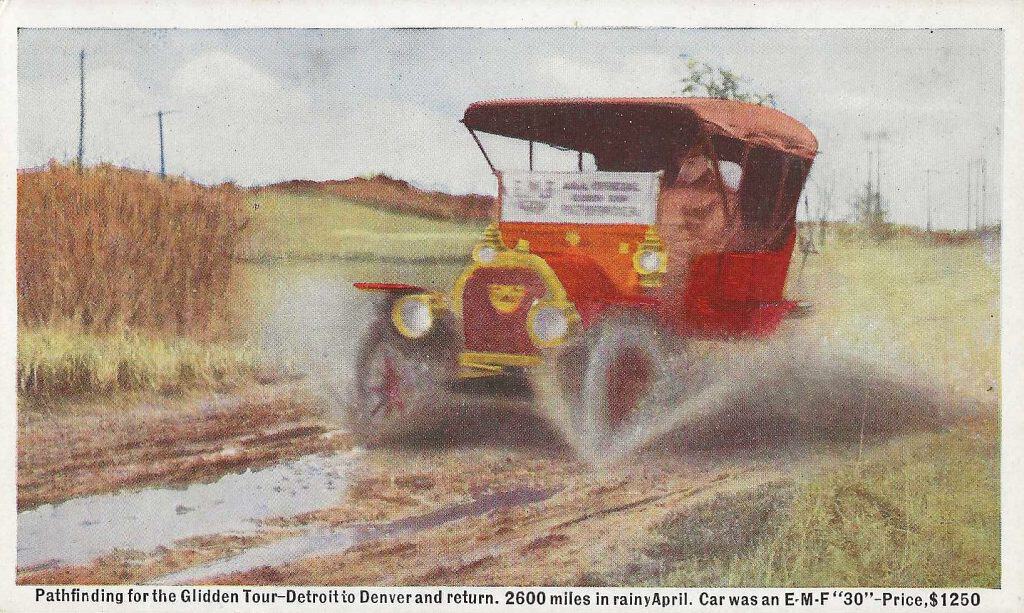
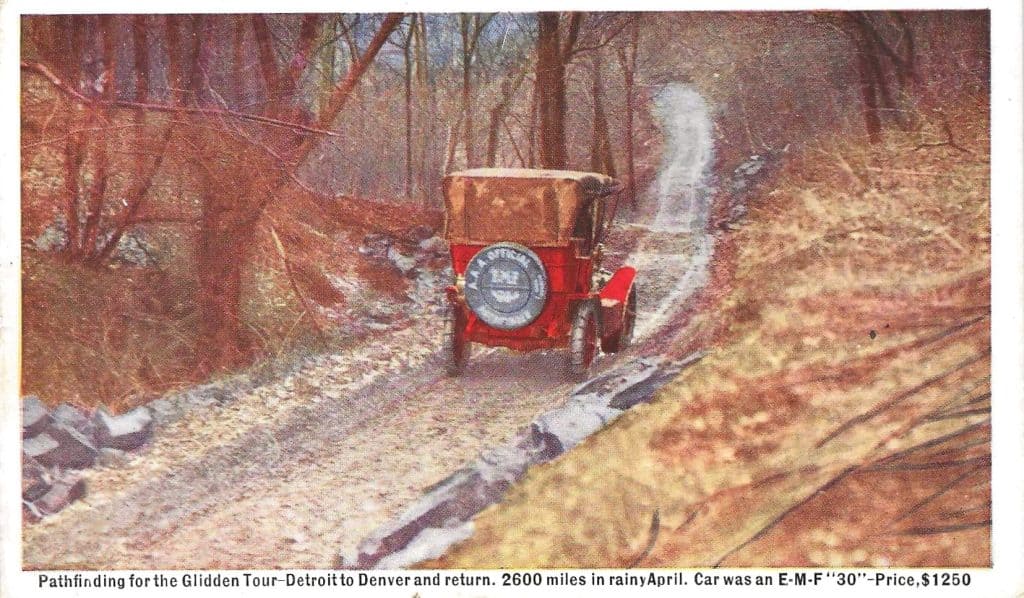
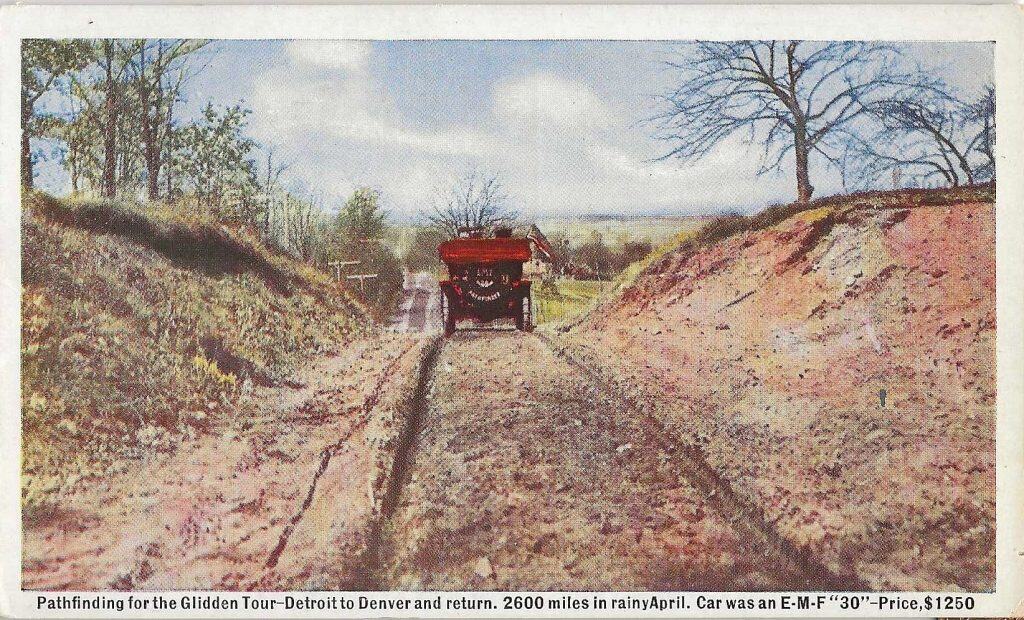

My Flanders “20” inventory contains 13 unused examples. Several were sold at a recent show. Of four from the earliest set, two have the $1,250. price inked over in red. Printed above: price now, $1,000.
Very interesting article. Never seen such cards.
It is amazing how the motor vehicle has developed over 100 years. Was it a good thing? These postcards give an insight into a new innovation. Will look out for the social media news on this year’s tour in Georgia.
Thanks for this fine article telling about the Glidden Tours and the postcards. I have had some of these, but like so often happens I did not know about these details and how this worked into the push for Good Roads. This is another of those wonderful chapters in our Social History and how postcards have played a part in telling the story and spreading the word for the need fir Good Roads.
Just as wags have claimed Ford stands for “Found On Road Dead” or “Fix Or Repair Daily”, E-M-F was said to mean “Every Morning Fix-It” or “Each Motorist’s Folly”.
Thanks for a very interesting article. I’m absolutely sure that I have never set eyes on a single one of these postcards before!
I really enjoy these weekly newsletters. I just retired and finally have some time to go through my random accumulation of postcards.
Transportation themed cards are some of my favorite types and I really wish that I had some of these in my collection. This was a very interesting article thanks for sharing it.
So interesting. I have some info on the one (1911) that passed thru GA and there are photos re that in GA collections. There were other types of races in Savannah Ga earlier than 1906, but none as long term as the Glidden. Thanks for posting!